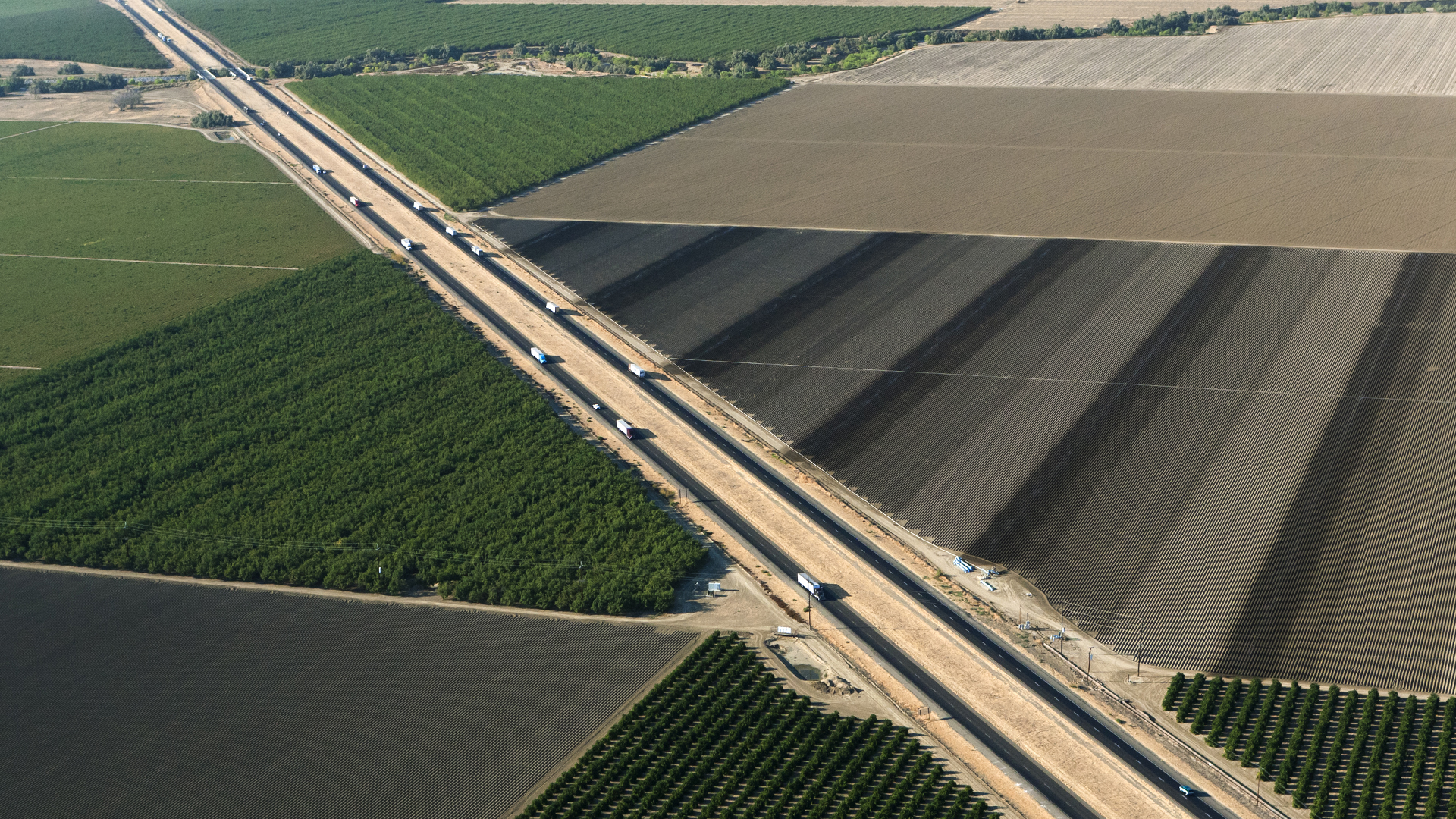

Those dreaming of an American autobahn have a new and unlikely hero in the famously risk-averse state of California, where a state senator has introduced legislation that would create new driving lanes with no speed limit on two major highways. The goal? To cut emissions, of course.
Brought to the floor by Senator John Moorlach of Orange County, SB-319 would direct the state’s Department of Transportation to build two unlimited speed lanes on each side of Interstate 5 and State Route 99, the main north-south arteries linking cities like Los Angeles, San Francisco, and Sacramento. The sections of the roadways in question run straight through the supremely flat Central Valley, making for ideal high-speed driving conditions.
Perhaps paradoxically, California’s answer to the German autobahn would be paid for by the state’s Greenhouse Gas Reduction Fund. The text of SB-319 points out that the recent collapse of California’s ambitious plan for a bullet train between Los Angeles and San Francisco, which was originally intended to trace the same route as the proposed unlimited speed lanes, has left residents without “access to high-speed, unabated transportation across the state.”
That leaves more cars piling on those highways—and according to the bill, more terrible traffic, and thus more emissions. Moorlach’s plan aims to cut congestion, save the planet, and give California drivers a reason to feel alive again.
“Why don’t we provide people with vehicles the opportunity just to drive at 100 miles an hour, get to San Francisco in a shorter period of time than the train would?” Moorlach said to CBS Sacramento. “You’re burning the fuel efficiently, as opposed to just sitting in slow traffic waiting for one truck to pass another truck for 20 minutes.”

But would it work? Should the bill somehow become law, Moorlach pointed out that widening an existing highway is much cheaper than acquiring private land and building a brand-new rail line. So from a technical and financial standpoint, adding travel lanes with no speed limit is more feasible than the bullet train. And, you know, more fun.
In terms of the bill’s stated purpose—to curb emissions—the answer is less clear. Anyone who’s sat in stop-and-go traffic knows it can be murder on your mileage, but that’s equally true for driving 120 mph, especially in a car that’s not aerodynamically gifted. It’s just a simple fact: You burn a lot more gas at those speeds. Germany recently took a look at adding more speed limits to its autobahn network to lower emissions, in fact.
There are other factors too, like how studies have shown that adding the number of lanes on a highway can actually lead to more traffic, as the increase in road capacity encourages more people to drive. The state need not look any further than it’s own 405 Freeway, the subject of a $1.6 billion widening project in Los Angeles earlier this decade that’s had essentially no impact on rush hour congestion. Then there’s the general skill gap between the average German and American behind the wheel; the former’s driver education programs are much more robust than our own.
So can California pivot from enthusiast hell to a high-speed paradise? Seems unlikely—but we’ll keep tabs on the legislation as it moves through the state house.